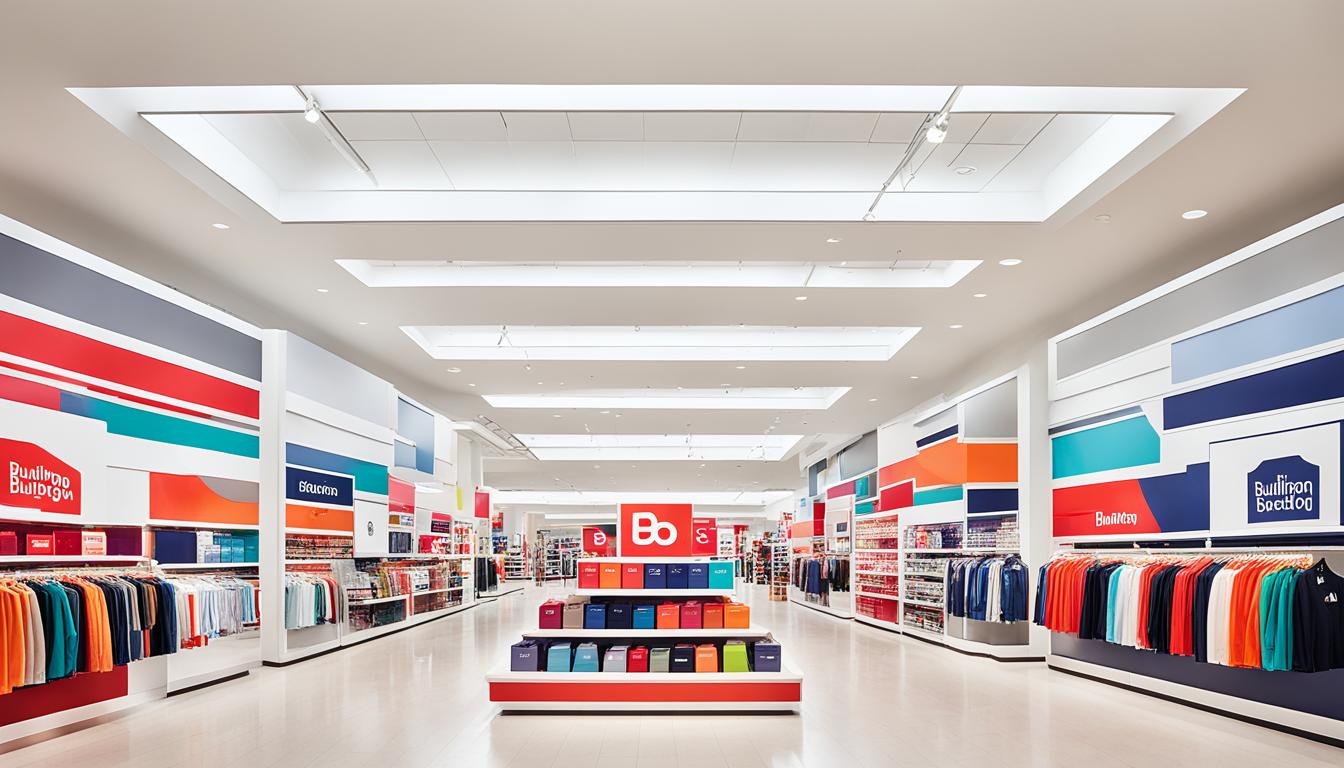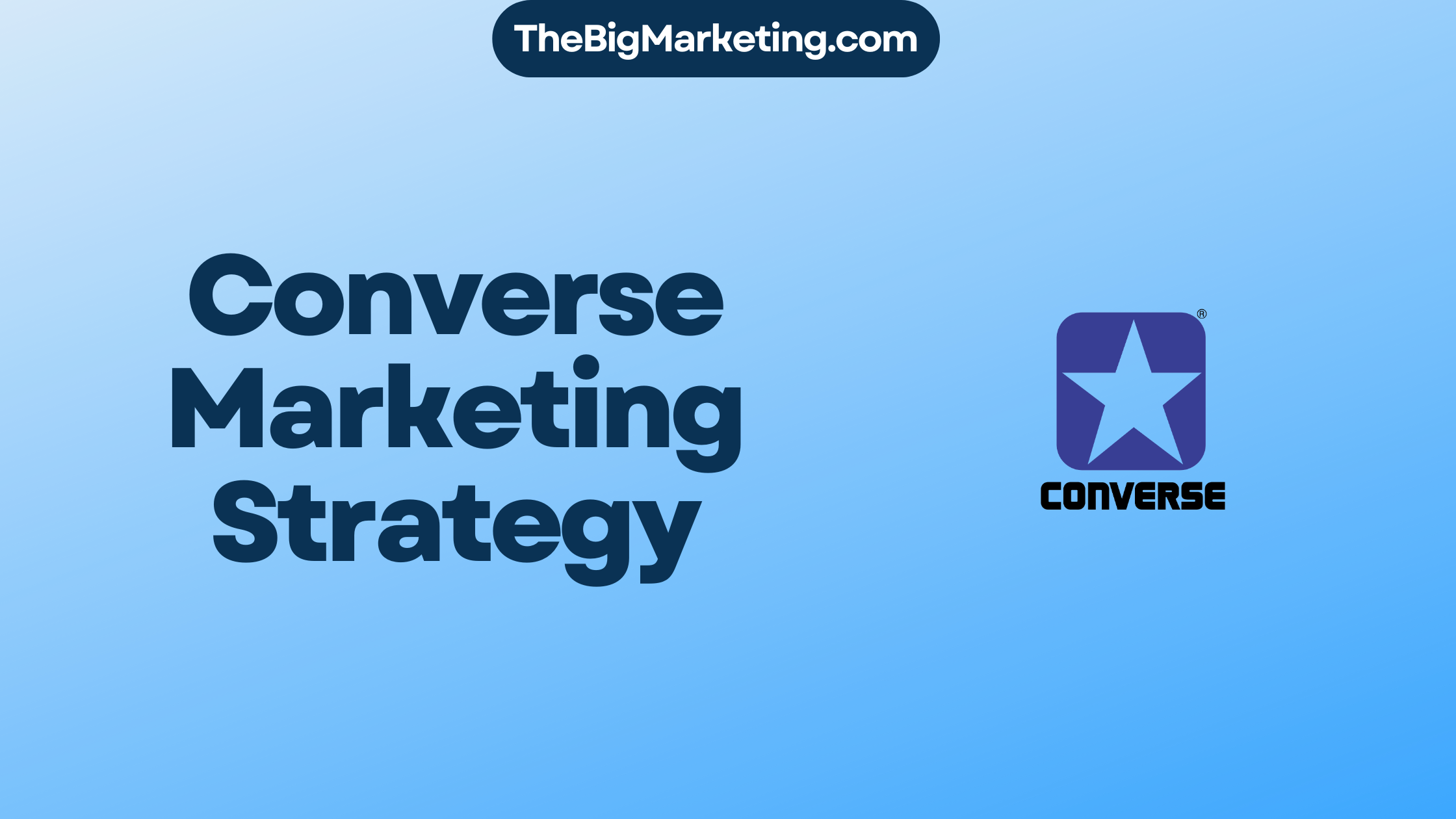Nike stands as a globally recognized juggernaut in the athletic apparel and footwear market. Founded in 1964, it has grown significantly, becoming known for its broad range of sports gear and for its innovative approach to product design and marketing. Despite generating a substantial $41.3 billion in revenue in FY 2020 and establishing the highest brand value in the sportswear category, Nike faces formidable competition from diverse brands that provide alternative products and capture market share in various sports and fashion segments across the globe.
From Adidas to Under Armour, several athletic brands compete with Nike’s dominant market position. These top Nike competitors bring their unique strengths to the table, ranging from cutting-edge technologies to heritage-rich branding. As consumers continue to seek the best performance-enhancing and stylish sportswear, the competition intensifies, showcasing an ever-evolving landscape marked by innovation and strategic marketing.
Introduction to Nike and Its Market Position
Since its inception by Phil Knight and Bill Bowerman, Nike has transformed from a simple distributor to an iconic brand. Nike’s journey over the decades highlights significant growth and diversification, enabling it to stand out among various nike rival brands.
The History and Growth of Nike
Nike’s history is a compelling narrative of innovation and ambition. Initially dealing in Japanese footwear, Phil Knight and Bill Bowerman’s vision led to the birth of Nike. The “Just Do It” slogan, introduced in the late ’80s, encapsulated the spirit of athletic empowerment and was instrumental in propelling Nike to the forefront of the sportswear industry against various competing brands nike.
Overview of Nike’s Products and Technology
Nike’s product range showcases its commitment to excellence. From the revolutionary Air Max to the cutting-edge Flyknit technology, the company continually sets new benchmarks in sportswear. These innovations have secured Nike’s position amidst the best nike competitors, offering products that cater to athletes and casual wearers alike.
Nike’s Market Strategy and Global Presence
Nike’s marketing strategies are a masterclass in brand positioning. Through targeted advertising campaigns, strategic athlete endorsements, and a powerful brand narrative, Nike has solidified its global presence. Their approach not only counters other competing brands nike but also integrates seamlessly into popular culture, making Nike a household name worldwide.
Adidas: Nike’s Biggest Rival
Adidas, founded by Adolf Dassler in 1949, stands as one of the key Nike competitors, consistently challenging Nike across all segments of footwear, apparel, and accessories. With its deep-rooted heritage and innovative approaches, Adidas continuously refines its product offerings and market strategies to stay ahead in the competitive landscape.
Historical Background and Market Strategy
The historical rivalry between Adidas and Nike spans several decades, marked by intense competition and strategic maneuvering. Adidas’ market strategy revolves around its strong brand identity and commitment to performance and style. The company’s tagline, “Impossible is Nothing,” embodies its approach to blending exceptional performance features with fashionable designs.
Key Products and Technologies
Adidas is renowned for its groundbreaking technologies and iconic products that define its brand. Key innovations, such as Boost cushioning and Primeknit, exemplify its dedication to enhancing athletic performance while ensuring maximum comfort and durability. These technologies position Adidas as a strong contender in the ongoing Nike vs competitors battle.
Adidas’ Marketing and Sponsorship Efforts
Adidas leverages aggressive marketing and extensive sponsorship deals to fortify its market presence. Collaborations with high-profile artists and athletes, including Kanye West and Lionel Messi, amplify its brand visibility and appeal to a broader audience. These efforts not only boost Adidas’ growth but also cement its status as one of the primary key Nike competitors in the global market.
Puma: A Strong Challenger in Sportswear
Founded by Rudolf Dassler in 1948, Puma has earned its reputation as one of the top competitors of Nike. This sportswear brand boasts a rich history, especially in the realm of soccer, and its commitment to performance and style ensures it remains a formidable player in the market.
Puma’s dedication to innovation is evident through its advanced technologies like NETFIT and IGNITE cushioning. These developments are not only aimed at enhancing athletic performance but also at expanding Puma’s appeal in the lifestyle sector, effectively challenging Nike’s market presence.
Despite facing intense competition, Puma continues to carve out its niche by blending athletic performance with fashionable aesthetics. This dual strategy allows Puma to retain its stature among the top competitors of Nike, providing consumers with an attractive alternative that emphasizes both functionality and style.
Moreover, Puma’s consistent focus on innovation and lifestyle branding has placed it firmly among the top competitors of Nike. Its ability to integrate advanced athletic technologies with contemporary fashion trends ensures that Puma remains a strong contender in the ever-evolving sportswear market.
New Balance: Focus on Comfort and Authenticity
New Balance has established itself among the best nike competitors by emphasizing comfort and authenticity. Founded in 1906, this brand has consistently prioritized fit and performance, setting it apart from other nike brand competitors.
New Balance’s Unique Market Position
Unlike many of its peers, New Balance chooses craftsmanship over celebrity endorsements. This strategy has allowed the brand to carve out a distinct niche and appeals strongly to consumers who value quality and authenticity in their sportswear.
Product Range and Innovation
Innovation is at the heart of New Balance’s product development. Technologies like Fresh Foam and FuelCell cushioning illustrate their commitment to enhancing athletic performance. These features make New Balance a formidable player among the best nike competitors, offering products that combine function with strength.
Reebok: A Heritage Brand with Modern Appeal
Reebok, initially known for its performance in track and field, has significantly evolved over the decades. In the ’80s and ’90s, it grew to prominence by blending athletic functionality with stylish appeal. Now under Adidas, Reebok has reinvented itself by merging heritage elements with contemporary sports fashion, remaining a notable player amongst nike competitors.
Despite facing various challenges and a potential sale, Reebok continues to innovate and stay relevant in the competitive landscape. By balancing its rich legacy with modern trends, Reebok positions itself as a viable alternative in the nike vs competitors arena. The brand’s ongoing commitment to creativity and fresh design ensures it remains a preferred choice for consumers seeking a blend of past and present sportswear styles.
Reebok’s product lineup consistently reflects its dual focus on heritage and innovation. This blend has allowed the brand to maintain a solid footing and prove its enduring appeal in a market flooded with strong nike competitors. From advanced athletic shoes to fashionable sportswear, Reebok offers a comprehensive range that meets contemporary demands while honoring its iconic past.
Under Armour: Rising Through Innovation
Under Armour, founded in 1996 by Kevin Plank, has ascended to become one of the top nike competitors in the sportswear industry. Its history is a testament to the brand’s commitment to performance-enhancing apparel and footwear.
Under Armour’s Rapid Growth
Within a few short years, Under Armour transitioned from a startup to a well-known player in the sportswear market. The brand’s focus on moisture-wicking fabric brought athletes comfort never experienced before. This pivotal invention set the stage for Under Armour to secure its place among nike rival brands.
Signature Technologies and Products
Under Armour’s signature technologies have played a critical role in maintaining its status as a formidable competitor. The brand’s product lineup features innovations like ColdGear for thermal regulation, UA HOVR for enhanced cushioning, and HeatGear for lightweight performance fabrics. These advances position Under Armour among the top nike competitors, keeping them relevant and competitive in a constantly evolving market.
Top Athletics and Lifestyle Brands Competing with Nike
The athletic apparel and footwear industry is rich with competition. While Nike remains a dominant force, other brands continually emerge and innovate, making them notable nike competitors. Brands like Fila, Asics, and Anta Sports each carve out niches that directly challenge Nike’s broad market appeal.
Fila: Reviving a Heritage Brand
Fila has seen a significant resurgence in recent years, transitioning from its athletic roots to become a staple in urban fashion. This shift has made Fila one of the top competitors of nike, appealing primarily to a younger, style-conscious demographic. With its combination of retro aesthetics and contemporary design, Fila continues to gain momentum in the highly competitive sportswear market.
Asics: Focus on Running Shoes and Athletic Gear
Asics has long been recognized for its commitment to running shoes and athletic gear. Specializing in technical footwear, Asics emphasizes performance and reliability, distinguishing itself from other nike competitors. The brand’s dedication to research and innovation, specifically through its GEL cushioning technology, reinforces its strong presence in the running community.
Anta Sports: The Leading Chinese Competitor
Anta Sports stands out as a leading Chinese competitor to Nike, rapidly expanding its influence both domestically and internationally. By acquiring high-profile brands and investing in sportswear technology, Anta has positioned itself as one of the top competitors of nike. The brand’s strategic sponsorship deals and marketing initiatives have further solidified its status in the global market.
The Digital Battlefield: Competing E-Commerce Platforms for Nike Products
Nike’s dominance isn’t only contended within brick-and-mortar stores but also fiercely in the digital retail arena. Several e-commerce platforms offer extensive inventories of Nike products, each striving to provide unique customer shopping experiences and catering to diverse market segments.
Footlocker.com: A Major Retailer
Footlocker.com stands as a primary online destination for athletic footwear and apparel. This platform extends beyond selling Nike products, creating customized shopping experiences and sports-centric collections that appeal to a broad audience. Its strategic partnerships and exclusive releases have cemented Footlocker.com as a significant player in the competitive digital market.
StockX.com: The Marketplace for Sneakers and Apparel
StockX.com has revolutionized the buying and selling of sneakers and apparel, acting as a live marketplace that authenticates products before shipping. This platform is particularly known for its vast selection of Nike sneakers, often at competitive prices, making it a go-to for enthusiasts seeking rare or limited-edition pieces.
Goat.com: Premium Sneaker Reseller
Goat.com specializes in the resale of premium sneakers, offering meticulously vetted Nike products to ensure quality and authenticity. By catering to collectors and fashion-conscious consumers, Goat.com has carved out a niche market, drawing those who value exclusivity and are willing to pay a premium for special editions and hard-to-find items.
In conclusion, as Nike continues to innovate and expand its digital presence, these competing brands challenge its dominance in the e-commerce landscape, providing consumers with alternatives and diverse purchasing avenues.





